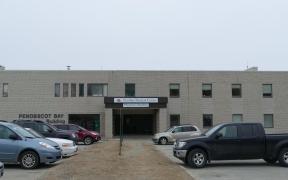Tendonitis is and inflammation or injury to a tendon. Often tendonitis heals with rest, pain relievers and pain relievers. Sometimes people with tendonitis need surgery.
What is tendonitis?
Tendonitis, also known as tendinitis, is inflammation of any tendon. The tendon is a fibrous cord that connects bone to a muscle. The most common places that tendonitis occurs are the base of the thumb, elbow, shoulder, hip, knee and Achilles tendon.
Tendonitis can affect people of any age. It is commonly seen among adolescents and adults who are active and play sports. Elderly individuals are prone to tendonitis because tendons tend to lose their elasticity and become weaker with age.
Tendonitis conditions
Tendonitis conditions often result from overuse or repetitive motion from sports, jobs or activities. Common names for tendonitis conditions include:
- Tennis elbow
- Golfer’s elbow
- Jumper’s knee
- Swimmer’s shoulder
Tendonitis causes
Tendonitis can be caused by:
- Bad posture
- Lack of stretching or conditioning before exercise, sports or recreational activities
- Abnormal bone or joint placement
- Stresses from another condition, such as rheumatoid arthritis, gout, thyroid disorders, or medication reactions.
- Repeated motions or movements
Tendonitis symptoms
Symptoms of tendonitis depend on the part of the body affected. Common symptoms include:
- Gradual buildup or sudden onset of pain
- Crackling/grating feeling when moving
- Swelling
- Affected area may be hot and red
- A lump may develop along the tendon
Tendonitis diagnosis
Tendonitis can typically be diagnosed based on the patient’s symptoms and after a physical examination by a doctor. A creaky sound may be heard when the tendon is moved. Other methods of diagnosis include:
- X-rays to show calcium deposits around the tendon
- MRI or ultrasound imaging to reveal swelling around the tendon
- Blood tests to check for presence of other diseases, such as rheumatoid arthritis
Tendonitis treatment
Treatment for tendonitis focuses on easing pain and reducing inflammation. Some treatment methods include:
- Rest
- Heat/ice
- Anti-inflammatory pain relievers or painkillers
- Corticosteroid injections
- Physical therapy
- Shock wave therapy
- Surgery
Tendonitis prevention
Take steps to avoid putting too much strain or pressure on tendons. Some preventive measures include:
- Exercises to strengthen muscles around the tendon
- Proper posture and body mechanics
- Proper techniques in sports and recreational activities
- Warm-up and stretching before exercise and physical activity
- Rest between repetitive movements































